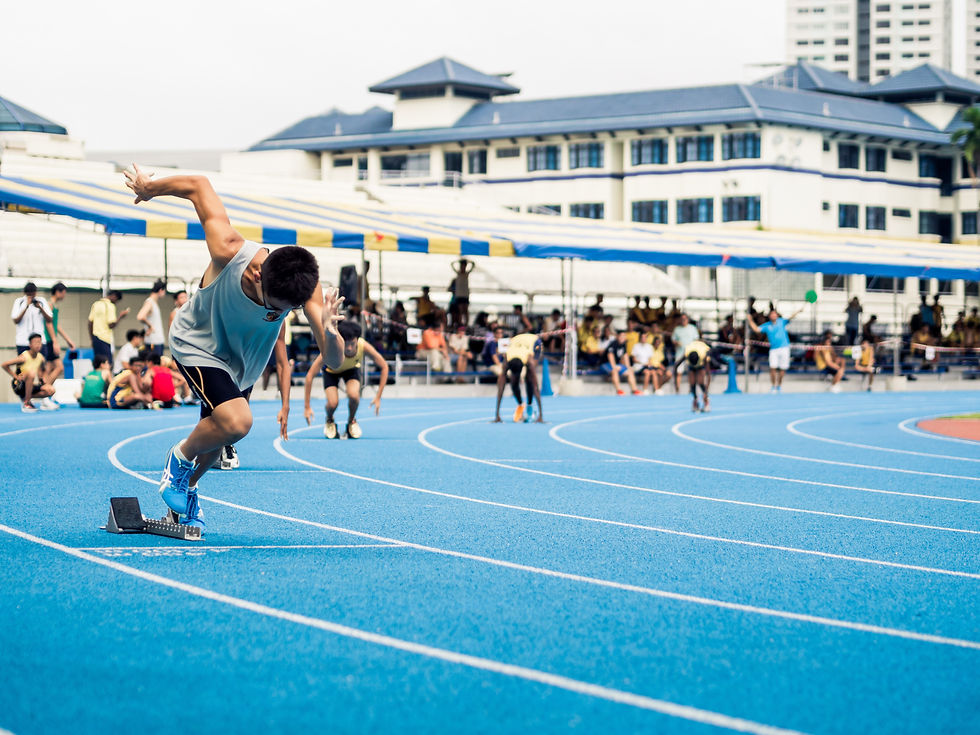The Five Components of Fitness
- Yamar Washington
- Jan 30, 2019
- 3 min read

Crunched for time? Want to make sure your fitness training is constructive and thorough? It is easy to throw a bunch of exercises and lifts together and label it a “workout”, but all workouts are neither the same nor lead to optimal results. In order to ensure good, productive workouts that not only provide short term gains, but also aim towards longevity and optimal health, be mindful of the five fitness components:

1. Speed
Speed is merely a measurement of how fast something is moving; the ability to move the body or parts of the body through the greatest range of motion in the least amount of time. In regards to general fitness, terms such as pace, tempo, rate, and momentum are used regularly. The term speed normally invokes images of running, however speed can be applied to any component of controlled physical movement. For instance, doing as many pushups as you can for 30 seconds is an example of a coach/trainer utilizing the speed component to provide quick muscle fatigue and develop motor skills.

2. Strength
According to the United States Olympic Committee, strength is “the ability to exert force with no time constraints; it is simply the degree to which force can be applied.” When you combine speed and strength you have power. Power is the ability to generate force in the shortest amount of time. Exercises such as cleans, jerks, squat jumps etc. utilize and develop power. Out of all forms of biomotor learning and fitness, strength is the most all-encompassing. Anything you do, whether it is lifting an object, balancing, running, or even rising from bed utilizes strength.

3. Endurance
Also known as work capacity, endurance is the ability to tolerate and recover from a workload/ exercise.
There are three components of endurance:
-The ability to tolerate a high workload.
-The ability to recover from the workload.
-The capacity to resist fatigue from whatever the source.
A strong foundation of general fitness is used as a base before higher or more specific forms of fitness are pursued. For instance, if you have not been working out for a long time, and then you hop into a hardcore boot camp class, in all likelihood you will not be able to complete the class. Since your endurance is minimal, your ability to exert energy for an extended period of time is marginal. You must first establish a base of endurance via walking, jogging, or other low impact activities. Once this foundation has been established, it is easier to add other fitness components onto it.

4. Flexibility
Flexibility is the measure of the controlled range of motion around a joint. Most of us think of flexibility as purely elongating the muscles, but the benefits strongly derive in the skeletal system. Ever heard the term “use it or lose it?” An inflexible body will not only have discomfort and pain, but over time the joints will stiffen, blood flow will stagger, and unneeded pressures can be placed on bodily systems. As previous discussed in the article Stretch it Out, there are numerous ways to stretch that include static, dynamic, and pnf amongst others. For athletes or running enthusiasts, the flexibility in the hip flexors, psoas, and gluteus have a large determination on running speed. Mobility in these areas allow for more ground to be covered each stride and for the legs to “turn over” at a faster smoother pace. But even for those who hate running, gaining flexibility over time has tangible positive physiological effects on the body… and it just feels good.

5. Coordination
So it’s Friday night. You call your friend up. Ya’ll are hitting the local nightspot and want to make sure your outfits are matching. That is coordination. No. Coordination is actually the ability to connect, link, and control force, and stabilize at the correct plane in a certain time. What?! Coordination is basically unifying all consciously controlled bodily systems at a specific moment. For instance, if you jump up in the air, extend an arm, catch a ball with one hand, and then land on both feet, that is an example of coordination. You have displayed a myriad of biomotor skills in that simple task. Balance, spatial awareness, and rhythm are some of the components of coordination. So have fun hopping on one leg while rubbing circles on your tummy with your left hand, and patting the top of your head with the right hand. Or maybe just toss a frisbee back and forth with someone and fire up those motor skills that way. Your choice.



Comments